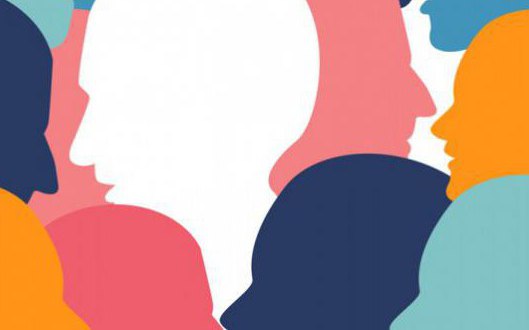Have you ever wondered why people react equally to news and events, in a certain way carry out some kind of domestic operations? Or establish clear, repeating associations with certain events, holidays. You can add stereotypes and habits to this list that people live with without giving them any meaning. In science, all of this has long been given a name - a pattern. What it is?
Get to know the concept
The concept of "pattern" is found in physics, computer science, design, music and psychology. Translated from English, it means "template," model. In relation to psychology, a pattern can be briefly described as a paradigm of behavior characteristic of a person in certain circumstances. This model works automatically, involuntarily, in the process of human interaction with the outside world. Patterns can be found everywhere: washing in the morning, shaking hands at a meeting, a way to eat an apple, answer phone calls, etc.
Even a beloved pet, who sees the owner putting on a jacket and boots, is already internally tuned in for a walk. You say this is a conditioned reflex? And make a mistake. A pattern in psychology is deeper than instinct or reflex. This is a certain program embedded in the human brain, according to which he lives and contacts with others.

Pattern Properties
- Pattern is a stable category. It is easy to recognize, as it is often repeated. As a rule, an unconsciously created behavior algorithm is rarely and difficult to correct.
- The pattern may appear in whole or in part. In the latter case, experts call this code. For example, when a person hears the name of a familiar person or the name of the resting place where he was, he is captured by the memories and emotions associated with them. So, when pronouncing the code, the whole pattern is launched.
- Psychological patterns do not exist separately from each other. There is an innate pattern - the starting point. Others are layered on it. They combine with stereotypes, habits, forming the character and lifestyle of a person.
- A person is constantly in development, accumulating experience, self-improvement. Accordingly, the pattern is transformed. What it is? For example, a person has become accustomed to isolation from childhood, but socialization is inevitable. He understands that for a harmonious life in society, you need to make acquaintances, be able to conduct dialogue with people, to be mutual. As new “skills” are mastered, a shift in the pattern of behavior occurs. However, some habits of the "old model" may still be active.
Types of Behavioral Patterns
Behavioral patterns have a fairly broad classification. The main ones can be called congenital (hereditary) and acquired (creative), positive (comfortable) and negative (erroneous), social and individual, communicative. All of them are divided by place and quality of manifestation. Let's consider them on the general examples.
Social and individual patterns
Social patterns are patterns of human behavior in society. In other words, these are certain actions that are repeated under certain circumstances. These include a handshake at a meeting or a nod of the head, a wave of a hand when parting, etc. These examples, on the one hand, demonstrate typical patterns of behavior of any person in society, and on the other, they speak about cultural experience. For example, in Japan, a common social pattern is a bow when meeting with a friend or respected person.
To individual patterns, as a rule, include personal habits, human addictions. Examples are the preference to start breakfast with a sip of tea or a bite of bread, putting on socks first, then trousers or blouses, then skirts.
Congenital and acquired patterns
Hereditary patterns are those behavioral patterns that a person receives in the first minutes of his life. This is a genetic program that works at the level of instincts and reflexes. The innate pattern is given to man by nature. This model has many forms. For example, the nutritional form manifests itself in the process of sucking in an infant. Acquired patterns of behavior - this is the subsequent development of a person, his training, the formation of worldview, habits, way of thinking, etc.
Sometimes confusion occurs between congenital and acquired patterns. So, when a child, like one of the parents, does some kind of operation in a certain way, they talk about genetic similarity. In fact, this is only the result of imitation.

Positive and negative patterns
When a person has difficulty interacting with the outside world, he turns to a psychologist for help. Having poured out his soul and having passed a series of tests, the patient often hears from a specialist: "this is your negative pattern." What it is? The fact is that not all our habits and ways of moving in society can be comfortable. Some behavioral patterns openly interfere with a person's life. There are people who are panicky afraid of difficulties and therefore in every possible way avoid them. Others, on the contrary, are embroiled in a search for difficulties before fanaticism, as a result they face unpleasant consequences. All these are negative patterns that interfere with life and accumulate negative experience. It is possible and necessary to deal with such patterns, but sometimes it can be difficult to do. It is much easier to change something when the cause of all problems is clearly visible and understandable and the internal potential is adequately assessed.

Comfortable patterns are those patterns of behavior that help a person to develop harmoniously and overcome obstacles. Their range extends from elementary washing and shaking hands to the ability to compromise, friendliness.
Communicative patterns
Since man is a social creation, his communicative patterns are most developed. Their definition is possible in the reaction of facial expressions, gesture system, elements of vocalization. It is quite obvious that when speaking the news, the good person smiles, the bad news - he frowns. When a person is angry, he stomps his feet. When he asks another person to convey an object, he uses a pointing gesture. Even blind and deaf-mute children implement such communicative patterns without the possibility of imitation of the pattern.
Is it possible to change the pattern?
Behavioral patterns are the basis of man. They are very stable, so it is very difficult to change them, or even less to get rid of them at all. However, you can control the pattern. What it is? For example, a phobia is found in a person. He seeks help from a specialist. That, in turn, offers him a certain algorithm of actions, performing which the patient learns to control his fears. He is not able to get rid of them forever, but he can change the "position of power."
Of greatest interest are the experiments of substituting patterns for the opposite. There is a known case when an introvert woman came to the famous psychotherapist Milton Erickson with a request to help her become a more open and friendly person. Based on the patient's hobbies - breeding flowers - Erickson advised her to buy 200 pots of violets and take care of them. As soon as the sprouts begin to take root, the woman should send a pot of friends and strangers on the day of their birthday, engagement, wedding or to someone who is sick. Caring for two hundred violets distracted the woman from depressing thoughts, and soon she became the “queen of violets” in her staff.From a closed man, prone to severe depression, this woman turned into a desirable, open and friendly.
